It is often said that Watchmen is the most influential comic ever to be released. That comics wouldn’t be where they are without it, for good and for ill. But how did we get here, exactly? More to the point, just what influence did Watchmen provide to the larger world of comics? What, ultimately, is the legacy of Watchmen? Who watched the Watchmen?
In the wake of Watchmen, there have been many stories influenced by its style. There have been stories that riffed on what it was doing and ones that reacted against it. There have even been prequels to the narrative spun by Alan Moore and Dave Gibbons. But there had never been a direct sequel to Watchmen, let alone one that pushed the ultimate button: crossing over Watchmen with the DC Universe.
There had been attempts in the past, certainly. A cameo from Rorschach here. A thematic test image where Rorschach fights Frank Miller’s Batman there. And maybe one or two riffs to make things look spicy. But never anything as concrete as a complete sequel to Watchmen. That was… until Doomsday Clock.
Written by Geoff Johns with art by Gary Frank, Doomsday Clock is the big sequel to Watchmen. As part of the DC Rebirth initiative, a twelve issue miniseries was announced to pay off the big reveal at the end of the story: the DC Universe had been attacked by Dr. Manhattan.
A cursory glance at that sentence might make one… unsure. For all that the Before Watchmen comics weren’t uniformly good, there was a degree of draftsmanship to them. Not so much trying to one-up Watchmen as make a cheap cash-in without any sense of taste. But something like Doomsday Clock is… different.

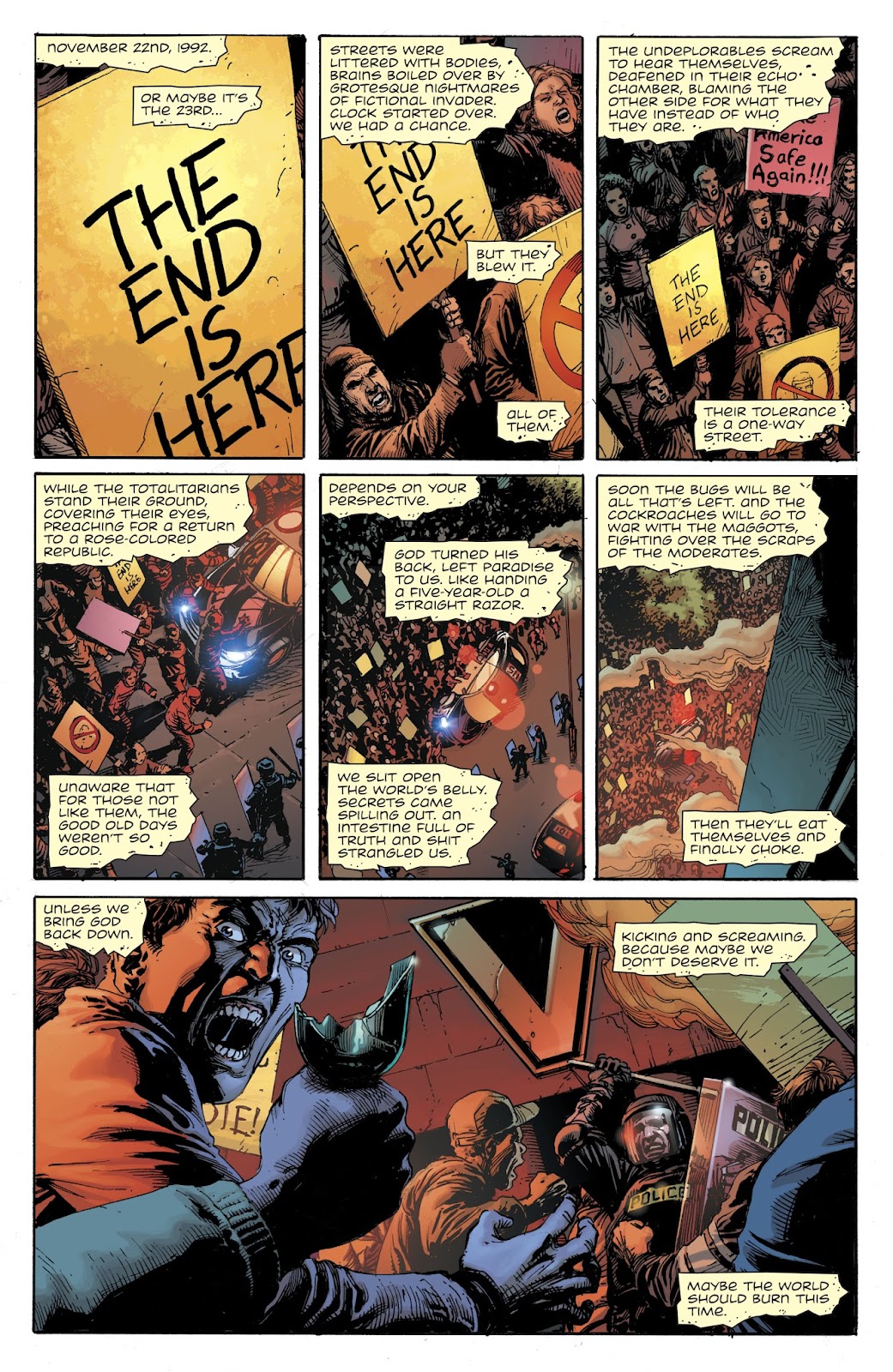
Consider the first page of Doomsday Clock. As with the majority of the first issue, the comic attempts to structurally match the panel layouts Moore and Gibbons made for their seminal comic. This results in parallel moments between the original comic and this newer volume such as this:
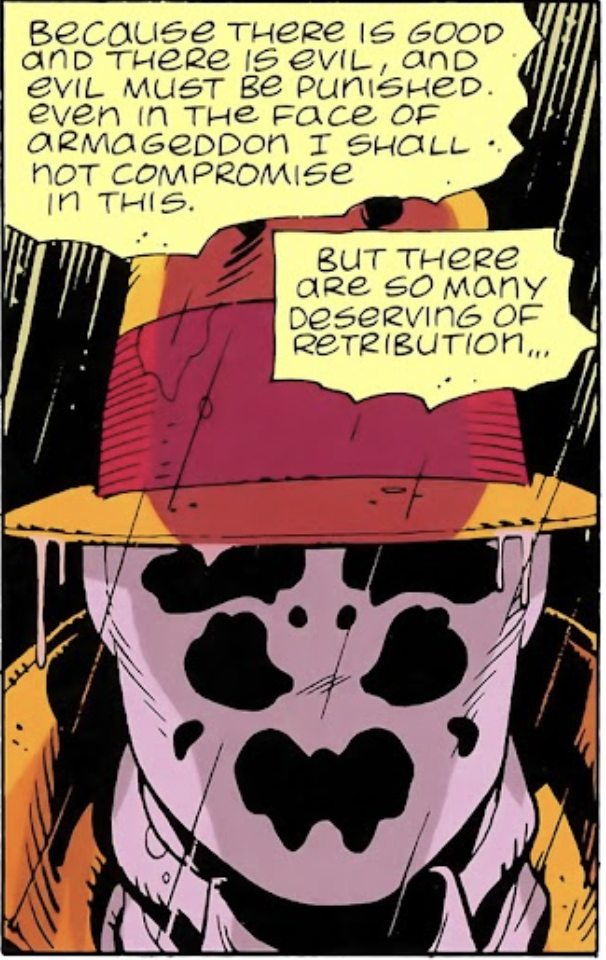
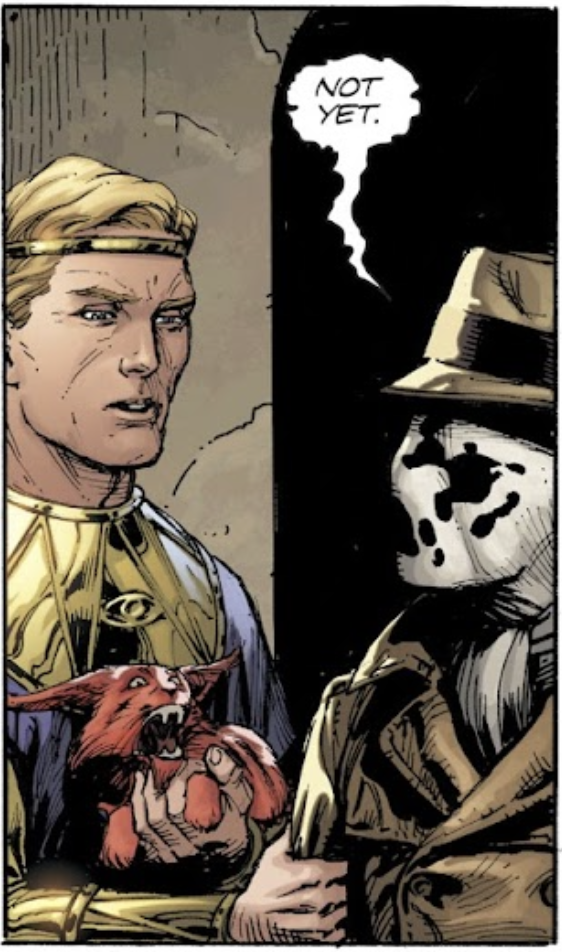
Within the two respective comics, these images act as foreshadowing for the climactic events of the narrative. In the former, we are presented with the worldview of Rorschach as someone who will never compromise his principles, even in the face of armageddon. In the latter, we see Rorschach II sneer at Ozymandias with regards to the nature of their relationship. The moments occurring at the exact same moment within their respective comics indicate their parallel purpose.
It goes to such great lengths to match what Watchmen was doing, that it even matches the moments where Moore was still trying to figure out how to write with a nine panel grid in mind and had four panel rows. This leads to a final page where the nine panel grid is subverted, as Superman dreams of his parents dying presented in a twelve panel grid.
However, it is with this opening page that Johns and Frank highlight their misunderstanding of how the material they’re riffing on functions. In the sequence presented in the first page, we see a protest over the actions committed by Ozymandias in Watchmen. Each panel rises from the street up and up and up. Only to then shift back to the street level to highlight some angry protesters. By contrast, the original comic presents a street cleaner washing away the blood from a murder scene as a man walks through the puddle. We end on a bird’s eye view of the street, the blood barely a splotch on the page, the man barely a dot.
The obvious note would be that the Johns/Frank work fails to understand the original comic by moving back to the ground in the final panel. This results in a jump cut within the panels’ trajectory; in contrast to Watchmen’s single take. One could certainly argue there’s a degree to which this subverts the original comic (as is the aim of Doomsday Clock, more on which later). However, a proper subversion would have the camera zoom down to the ground from up above, increasing the degrees of horror as we approach the bottom panel.
While one could argue that the jump cut move was within Johns’ script, Frank’s role in misunderstanding cannot be misplaced. It’s a very subtle failing one might not notice on first reading, let alone a reading intended to be mean. But once you notice it, it’s hard to miss. Simply put, Frank uses the wrong angle for ascending up Veidt’s main office.

In Watchmen, the ascent up the Comedian’s apartment complex is depicted via a perfectly vertical ascent. If one looks at the placement of the Smiley face button on each panel, it’s clearly in the exact same spot on each panel. One can draw a horizontal line from panel to panel and connect the buttons. The ascent highlights the control of the nine panel grid, that things are going to evoke some sort of design.

By contrast, the camera in Doomsday Clock is erratic and diagonal. Note the placement of the “THE END IS HERE” sign. Each panel moves the sign up and down from where it was previously. The placement of the sign in the first and third panels is in a similar space, but the second is slightly higher than the others. An argument could be made that the man holding the sign is moving his arms up and down, however Frank’s artwork doesn’t support that position because the man’s arms are in the exact same place on each panel.
Furthermore, the angle of the ascent makes the move away from the crowd of protestors feel off. Within Watchmen, the purpose of the ascent was to demonstrate the height from which the Comedian fell from. We start from a perspective a typical man on the street might have of seeing a blood stain on the street and then jump up a couple stories and then more and more until we reach the height from which The Comedian fell.
In Doomsday Clock, the purpose of the ascent appears to be to highlight the scope of the crowd. To start with just one person before highlighting two more then dozens. However, it simply does not work here for two reasons. Firstly, the sequence starts at the wrong close up. Putting aside that the sequence starts with the cover (which depicts slightly more of the crowd than Page 1, Panel 2), the first panel on the page is an extreme close up of the sign of one of the protestors. Were this better executed, the sequence would’ve begun with the second panel before the subsequent panels highlight more and more of the crowd, practically consuming the streets (Indeed, the first panel could act as an evocative cover page for the series, highlighting a stark contrast between Watchmen and Doomsday Clock in terms of their perspectives, with Watchmen featuring the famous “THE END IS NIGH” sign).
But what hurts the sequence even more is the adherence to the nine panel grid as used within the first issue of Watchmen. Given the nature of the sequence, the proper approach would be to start with a single panel before moving into a merged two panel, then having a second row that’s merged three panels highlighting the entirety of the crowd. You could even have the final row be a jump cut to a different perspective of these events (Maybe the televisions that are never explained that litter the next two pages of the sequence, having the remainder of the protest be depicted via security footage). Putting the reader in a more detached perspective of the events of the narrative rather than as on the street participants.
By adhering so devoutly to the form of Watchmen in its most literal sense, Johns and Frank miss how Watchmen is speaking to the reader. How it uses the nine panel grid as one would use a piano to play music. The beats of the gird (including their missteps) aren’t the point. Rather, its how those beats are used to convey the song being performed. In misunderstanding one, you misunderstand the other and end up with a discordant tune that meanders rather than soars.
Which brings us to the narration by Rorschach II. In Watchmen, the narration from Rorschach is depicted over the course of six panels on a single page with, at most, two narration boxes per panel. By contrast, Rorschach II has his narration boxes over the course of nine panels over the course of two pages with, at most, three narration boxes per panel.
It’s worth noting what’s being said in these panels. In Watchmen, Rorschach writes:
“Dog carcass in ally this morning, tire tread on burst stomach. This city is afraid of me. I have seen its true face. The streets are extended gutters and the gutters are full of blood and when the drains finally scab over, all the vermin will drown. The accumulated filth of all their sex and murder will foam up about their waists and all the whores and politicians will look up and shout “Save us!”… and I’ll look down and whisper “no.” They had a choice, all of them. They could have followed in the footsteps of good men like my father or President Truman. Decent men who believed in a day’s work for a day’s pay. Instead they followed the droppings of leachers and communists and didn’t realize that the trail led over a precipice until it was too late. Don’t tell me they didn’t have a choice. Now the whole world stands on the brink, staring down into bloody hell, all those liberals and intellectuals and smooth-talkers… and all of a sudden, nobody can think of anything to say.”
On the surface, these words have nothing to do with what is occurring on the page, which is a simple man trying to clean the streets of blood while a man with a sign walks through his puddle, leading to a punchline of the final line of that journal entry being responded with “Hmm. That’s quite a drop.” However, upon further readings, everything Watchmen is aiming for is revealed in this scene. The man walking down the streets is the man who wrote the narration we read. His actions parallel the narration (The gutters are full of blood) and highlight what he will do: make a mess of things by being a part of them.
The staccato rambling nature of the narration highlights the critique the book is presenting of a man such as Rorschach. If the narration was simply “Dog carcass in ally this morning, tire tread on burst stomach. This city is afraid of me. I have seen its true face. The streets are extended gutters and the gutters are full of blood and when the drains finally scab over, all the vermin will drown. The accumulated filth of all their sex and murder will foam up about their waists and all the whores and politicians will look up and shout ‘Save us!’… and I’ll look down and whisper ‘no,’” then there would be a badass proclamation of the hero’s worldview. But by going on even further into his ramblings, Moore collapses the coolness of the initial part to highlight some of the uglier aspects of this worldview.
But by remaining within the six panels of the page, it doesn’t overwhelm the point it’s trying to make about Rorschach. It gives you just enough to highlight his perspective and make it clear what that perspective is. Indeed, this is further done by having Rorschach’s Journal disappear for thirteen pages.
By contrast, in Doomsday Clock, Rorschach II’s narration boxes go:
“November 22nd, 1992. Or maybe it’s the 23rd… Streets were littered with bodies, brains boiled over by grotesque nightmares of fictional invader. Clock started over. We had a chance. But they blew it. All of them. The undeplorables scream to hear themselves, deafened in their echo chamber, blaming the other side for what they have instead of who they are. Their tolerance is a one-way street. While the totalitarians stand their ground, covering their eyes, preaching for a return to a rose-colored republic. Unaware that for those not like them, the good old days weren’t so good. Depends on your perspective. God turned his back, left paradise to us. Like handing a five-year-old a straight razor. We slit open the world’s belly. Secrets came spilling out. An intestine full of truth and shit strangled us. Soon the bugs will be all that’s left. And the cockroaches will go to war with the maggots, fighting over the scraps of the moderates. Then they’ll eat each themselves and finally choke. Unless we bring God back down. Kicking and screaming. Because maybe we don’t deserve it. Maybe the world should burn this time. We shattered the American Dream. This is the American Nightmare.”
The first thing you’ll notice about this is that the words aren’t acting as a contrast. The opening page of Doomsday Clock is a riot over what Ozymandias did in Watchmen. It is an extremely violent scene where people are destroying everything and are engaging with the politics of the narration. Rorschach II is thinking about what is happening on the page, why they’re doing it, whereas Rorschach writes about what’s happening in the world at large, while the events on the page are only subtext.
The second thing you’ll notice is that it’s complete and utter gibberish. Not in the sense that Rorschach’s initial narration was gibberish. Rather, it’s the gibberish of someone without any fucking idea what they’re talking about. On a sentence by sentence level, these words are utterly pants, meandering even more than their original source material did with less to say. It simultaneously plays its hand about the nature of Rorschach II too hard (note the opening confusion about the date) and muddies the water about what that hand actually is (it goes on for much longer than Rorschach’s Journal and reappears four pages later in such a way as to make it narration rather than journal entries. For what purpose, I really can’t say).
Take for example “The undeplorables scream to hear themselves, deafened in their echo chamber, blaming the other side for what they have instead of who they are. Their tolerance is a one-way street.” This is obviously a reference to the 2016 election cycle wherein Hilary Clinton referred to Trump supporters as “the basket of deplorables” (an odd thing for someone from 1992 to reference). This usage of the phrase is meant to turn things back on the anti-Trump side of the equation as being not as tolerant towards people with political differences. A typical conservative talking point.
But then it is immediately followed up by, “While the totalitarians stand their ground, covering their eyes, preaching for a return to a rose-colored republic. Unaware that for those not like them, the good old days weren’t so good.” A more liberal perspective on things, highlighting the Stand Your Ground law, which essentially makes it legal for white people to murder black people if they say they were scared enough.
In essence, this is a screed against both sides being equally as bad as one another. A centrist perspective on things. However, unlike Rorschach’s journal entries, there’s no real specific people invoked. There are references to political events, sure. But has anyone ever referred to the left as “Undeplorable?” Who are these Undeplorables? For that matter, who are the Totalitarians? After all, many people on the right would refer to leftist as totalitarian in nature. There’s no specificity to Rorschach II’s narration the way there is to Rorschach’s Journal. For that matter, what are the politics of the people protesting Ozymandias? It gestures at those it despises rather than name them. It notes them, but it doesn’t understand them.
But perhaps the most damning thing of all is what Doomsday Clock takes umbrage with in this narration. Politically speaking, Doomsday Clock ultimately aligns with the centrism of Rorschach II. That there are problems on both sides, but they shouldn’t be reacted to with splitting things down the middle. There should be compromises made, a dialogue between both sides to find common ground (Typically, this results in multiple minorities getting the shaft). Its disagreement lies within Rorschach II’s nihilism regarding the prospect of finding a middle ground.
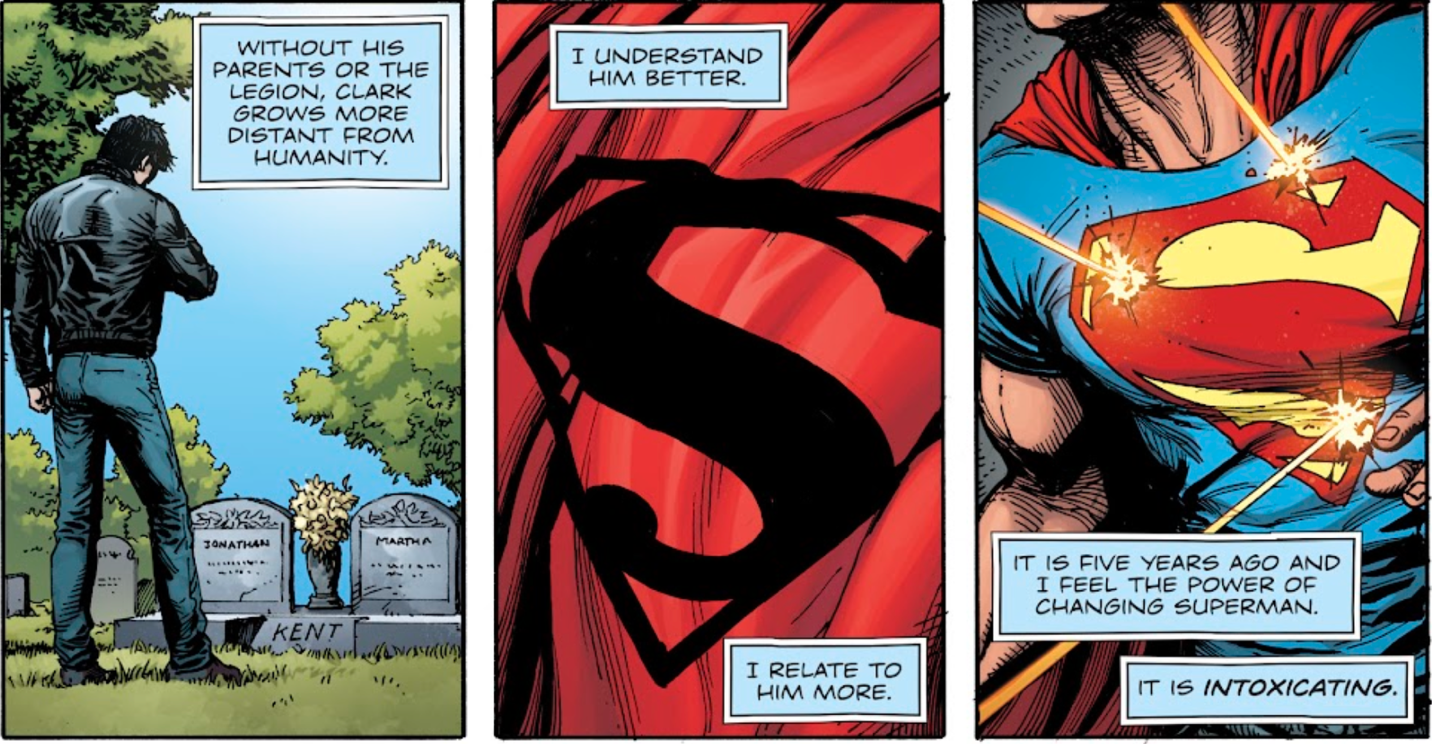
As with Watchmen, this too is a demonstration of Doomsday Clock in action. Mainly, the comic acts as a critique of Watchmen itself and its effect on the DC Universe. In many regards, this is the culmination of a theme that has been running throughout Johns’ career at DC since the start: Why is everything so dark and grim? In Green Lantern: Rebirth, the answer was “Because Hal killed the Green Lantern Corps.” For Infinite Crisis, it was “Because Crisis on Infinite Earths wiped away the Multiverse.” For Blackest Night, “Because of an Alan Moore/Kevin O’Neil back up story.” And now, fittingly, the answer comes full circle to the thing many a fan has blamed for everything wrong with comics forever: Watchmen.
However, it’s worth noting that this claim is extremely ahistorical. It is based on the assumption that Alan Moore came out of a vacuum to destroy everything that’s good and decent about Superhero comics because he’s a spiteful little turd who hates love and joy and hope. In reality, Alan simply used Superhero fiction to speak to issues of the era. That era being the Long 80s, an extremely bleak period in the United States and Kingdom, not to mention the rest of the world.
Of course, Moore wasn’t the only superhero writer engaging with the time period in which they were living in. Around the same time as Watchmen, Mike Grell wrote and drew Green Arrow: The Longbow Hunters, a three issue series wherein the titular Green Arrow deals with many of the consequences of American Imperialism by shooting people with an actual bow and arrow. Prior to Watchmen, Frank Miller and Klaus Jansen published The Dark Knight Returns, an anti-Regan screed that emphasized the fascist elements of the genre in a way that, at the time, were read as more anti-authoritarian than fascist.
But perhaps the most interesting element in the Dark Superhero mix is Kōsei Ono, Kazumasa Hirai, and Ryoichi Ikegami’s 1970 Spider-Man: The Manga. In many regards a precursor to the dark reimagining of superhero fiction. Here, Yu Komori is a teenager bitten by a radioactive spider that brings him nothing but pain and suffering. His girlfriends end up getting addicted to drugs and dying, going insane, or dying before summoning a tiger spirit to kill everyone who she hated. Komori takes Parker’s bitter angst to eleven, often furious at the cruel and capricious nature of the universe. He even contemplates murdering some of his enemies, and even does so on a couple occasions.
On the other hand, Moore was unlikely to have been influenced by manga (Frank “Ronin” Miller, on the other hand…). Rather, his source of influence when developing his “deconstructionist” works was the Harvey Kurtzman and Wally Wood Mad short story Superduperman. Here, Superduperman (alias Clark Bent) is an egomaniacal, pathetic creep who uses his powers to show how much better he is than everyone else (by tricking the only viable competition into punching himself in the face) while also looking at the ladies powder room with his x-ray vision.
The key to this is that it’s extremely funny, of which Moore likewise is. It is often easy to forget just how funny Watchmen is when looking at what people have taken from it. But there are a ton of wry, subtle, on the nose, dark gags throughout the book. From the image of Dr. Manhattan reading a magazine as he waits for Laurie to return home to the cruel fate of Captain Carnage all the way to the ultimate punchline of the book being the most useless character in the entire story being the one who has the chance to decide the fate of all mankind.
As many a writer will tell you, comedy and horror are a double edged sword. For example, the idea that a squid being dropped on New York City will save the world is a flagrantly absurd solution to the problem of the Cold War (itself a flagrantly absurd situation the world found itself in). The comedy of the moment practically writes itself. However, the moment is played for horror, the emphasis being placed not on the idea of the squid, but rather the people who all died because of it. The ordinary people we have been following all along, issue after issue, who die a cruel death at the hands of something very silly. The best of Alan Moore’s successors understand this quite clearly.
Johns, on the other hand… There are certainly things within Doomsday Clock that are attempting to be jokes. But they’re of the “Point out how dumb Animal-Vegetable-Mineral Man is” or “Glass one of Alan Moore’s mates” variety. They’re mean-spirited snipes at the absurdity of the universe it’s playing with. It’s cruelty for the sake of itself. The cruelty is the point.
Because that’s the thing about all of this. The critique Doomsday Clock serves Watchmen? On the surface, it’s a typical story about how dark is bad because it lacks hope and joy. That if only they were taught the value of hope, these critics of Superheroes would understand how wrong they are. But the thing of it is… Doomsday Clock, like a lot of Johns’ work, is dark as fuck. It has people’s heads explode, sequences of gratuitous cruelty, and some downright mortifying moral values.
But then, the darkness isn’t the problem. Johns’ work likes the darkness (as demonstrated by the work’s love of Black Adam and Superboy Prime). Rather, it views the problem being those naysayers who would dare think superheroes are silly. Who would dare see issue with the capes crowd. Who think that the genre is inherently rotten because there’s some unreconstructed racist attitudes. Who would dare take umbrage with Superman.
Perhaps the most telling element of this is the ultimate cause of conflict for the majority of the DC Universe (the Watchmen characters [both classic and new] act as hanger-ons for the plot, affecting very little save for continuity BS) is The Superman Theory. A conspiracy theory that explains why most superheroes are from America: the Government is building an army of supermen to conquer the world.
While many writers would have this be revealed as a plot by Lex Luthor to fuck with Superman, here it’s revealed to be true. There really is a government plot to make superheroes. And the comic essentially shrugs its shoulders at the premise. It doesn’t have time to properly engage with the material because the pacing is shot to the point where it takes seven issues for the actual plot to begin. By which point, things have to move at a breakneck pace because Johns decided to make this a twelve issue series because Watchmen was a twelve issue series.
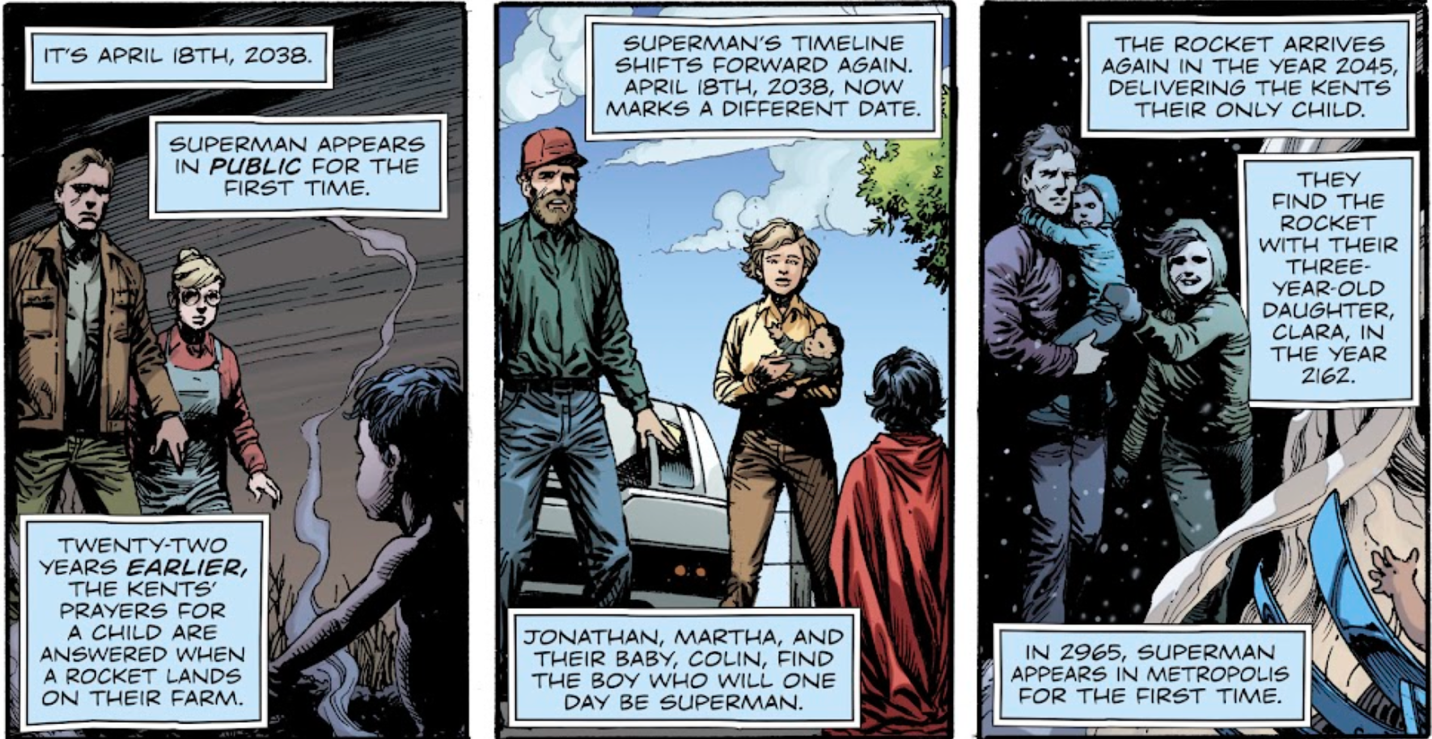
Because, at the end of the day, Doomsday Clock demonstrates the true legacy of Watchmen: It’s a brand. It’s the intellectual property of DC Comics, a Warner Bros. subsidiary (which in turn is owned by AT&T) that can be used to churn out new toys, buttons, flamethrowers, and more! It will be used to make new stories that will always be under the domain of DC Comics. There will be a miniseries about Bubastas the Quantum Cat teaming up with the Superpets or Rorschach II meeting The Questions. There will be no interest in any of the interesting aspects of Watchmen such as its themes, its critiques, or its formal techniques. No one actually cares about the Nine Panel Grid, let alone the cool things you can do with it. All that matters are the superheroes that spawn out of Watchmen and its follow-ups.
And this is all explicit text. The utopian vision of the future witnessed by Dr. Manhattan is that of a series of event comics dictated by Geoff Johns. A history that never changes, save for small details in a way that is approved by Johns. The grid breaks for no reason save Johns does not know how to use it. (If it was a proper removal of the yoke that it claims Watchmen to have over everyone, the grid would never return.) The only thing that matters is superheroes. The future is set in stone, under Johns’ control. Any alternatives must be squashed.
This is Watchmen’s Legacy.


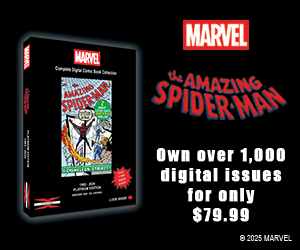
I enjoy your articles and your takes on things but sometimes I can’t help but think “why?”. Why does it matter that 30+ years later there’s a mediocre follow-up to a seminal book? Watchmen still stands on its own. Even after I’ve read Doomsday Clock, it still stands on its own. Personally I had fun reading it. Yes it fails in most every way that Watchmen is a triumph but that was a given. It’s a sequel, so it’s immediately redundant.
My concern is this, in all mediums of storytelling, there should be nothing holy and nothing sacred in the pursuit of a good story. Alan Moore understood this as he took the Charlton characters and created Watchmen. So why can’t someone come after and take the Watchmen characters and do something with them, like Tom King’s Rorschach. Alan Moore’s Watchmen stills and for those that precede that, Charlton’s characters still exist. There are going to be stinkers along the way but that will happen in a medium that has to put out dozens issues of new stories every month.
Anyways thanks for the reads and the takes.
Of all the reason Doomsday Clock was made, pursuit of a good story was in a last place. And that’s not about it being terrible, however you may feel about Avengers Endgame, it would be laughable to suggest it got made because the producers just really wanted to make a good movie.
„Nothing holy, nothing sacred“ in context of forsaking respect for creator’s wishes, the work’s place in history and intended meaning, general principles of originality, and frankly, just straight up dignity, for the sake of corporate fanboy wank, is a great way to ensure good stories come very limited supply.
Are you seriously, in 2023, still trying to make an argument Moore writing an original story featuring pre-existing characters is the same as DC doing a sequel to a story they’ve only aquirred through a legal loophole that fucked him and Gibbons over? That’s downright childish.
Hi Some guy,
Thanks for the response. I would have to disagree, I would say it childish to assume every piece of mass media exists for the sole purpose of making money. Now, every piece of mass media does exist in part for the purpose of making money. But it is deeply belittling to all the creators who put their energy into any piece of mass media so that we, the audience, can hopefully enjoy and enjoy the consumption.
It saddens me that you seem to live in black and white world. You should step out every once and awhile from the outrage echo chamber and enjoy the vibrant and bright world out there.
Ryan